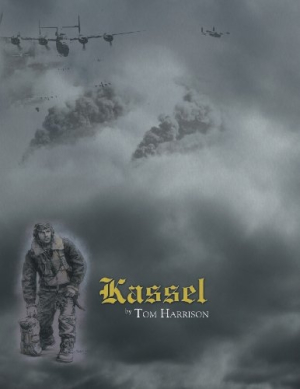Kassel
Detailed analysis vindicates World War II heroes who may have been unjustly blamed for disaster.
In 1944, a few dozen United States bombers were shot down over Germany in one of the worst disasters ever suffered by the country’s aerial forces. The official cause, according to a later inquiry, was navigational error by the lead airplane crew that sent the rest of the group astray. Through exhaustive research, Tom Harrison, a professor of physics and engineering at the University of North Texas and a self-described “Air Force brat,” offers a different reason for the disaster: failure of a state-of-the-art navigational system.
On September 25, 1944, the 8th US Air Force launched a major bombing raid targeting the German tank factories in Kassel, Germany. Among the bombers assigned to this raid were the thirty-five B-24 Liberators of the 445th Bomber Group. Shortly after the 445th began its bombing run and for no apparent reason, the lead plane angled away from the target and was followed by the rest of its group. After inexplicably bombing a nearby city of no particular military importance, the 445th began its turn toward home, but most of them would not make it. The bombers were ambushed by German Luftwaffe fighters. Separated from their fighter escorts and the massed guns of a large aerial formation, the bombers and their crew members were easy targets. Thirty-one of the thirty-five were shot down before Allied fighters arrived to rescue them.
The official inquiry blamed the crew of the lead airplane for the fatal navigational error, but Harrison, through detailed analysis of field orders and the Allied navigational systems of the time, makes a very different case. He believes that a simple typographical error caused the crew’s automated navigational system, one of the most advanced and secret technical marvels of the day, to send the lead bomber disastrously off course. He further argues that the military knew the true cause of the disaster and deliberately covered up its findings in order to preserve morale.
In an unusual cameo, movie star Jimmy Stewart appears as a key player in the aftermath of the Kassel catastrophe. An accomplished pilot, Stewart had aggressively pursued Air Force service during the war. He was one of the officers assigned to investigate the failed mission, in which at least one of his friends had died. Harrison’s conclusions regarding Stewart’s participation in this investigation give a human touch to an otherwise technical account.
Kassel is not a book for the casual reader of war stories. Much of it consists of extremely detailed descriptions of navigational systems used by the Allied air forces during World War II as well as diagrams, present-day satellite images, and a few historical photographs. Although Harrison writes well, casual readers unacquainted with this field of technical arcana will find the more-technical chapters almost impenetrable. Kassel’s work will appeal to historians of World War II aerial combat and technically oriented readers who have an interest in the development of radar and early electronic navigational systems. For such readers, this book will be an essential read, offering new insight into to an enduring mystery of World War II and a long-delayed vindication of brave men who may have been unjustly blamed for a disaster.
Reviewed by
Bradley A. Scott
Disclosure: This article is not an endorsement, but a review. The publisher of this book provided free copies of the book and paid a small fee to have their book reviewed by a professional reviewer. Foreword Reviews and Clarion Reviews make no guarantee that the publisher will receive a positive review. Foreword Magazine, Inc. is disclosing this in accordance with the Federal Trade Commission’s 16 CFR, Part 255.

